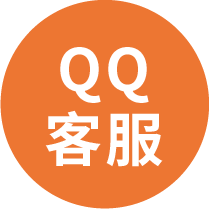CD153 / CD30L Human Protein
CAT#: AR31160PU-N
CD153 / CD30L human recombinant protein, 50 µg
|
Need it in bulk or customized? Get a free quote |
CN¥ 5,900.00
货期*
7周
规格
Product images

Specifications
| Product Data | |
| Species | Human |
| Expression Host | CHO |
| Expression cDNA Clone or AA Sequence |
HHHHHHHHPS PGGSGGQRTD SIPNSPDNVP LKGGNCSEDL LCILKR APFK KSWAYLQVAK HLNKTKLSWN KDGILHGVRY QDGNLVIQFP G LYFIICQLQ FLVQCPNNSV DLKLELLINK HIKKQALVTV CESGMQT KHV YQNLSQFLLD YLQVNTTISV NVDTFQYIDT STFPLENVLS IF LYSNSD
|
| Predicted MW | 21.3 kDa |
| Purity | >98% by SDS-PAGE & HPLC analysis |
| Buffer | Presentation State: Purified State: Lyophilized purified protein Buffer System: PBS without stabilizers |
| Preparation | Lyophilized purified protein |
| Protein Description | Recombinant Human soluble CD30L (sCD30L) is a 188 amino acid polypeptide corresponding to the extracellular domain, and contains an 8 residue N-terminal His-ag |
| Note | Centrifuge vials before opening! |
| Storage | Store lyophilized at 2-8°C for 6 months or at -20°C long term. After reconstitution store the antibody undiluted at 2-8°C for one month or (in aliquots) at -20°C long term. Avoid repeated freezing and thawing. |
| Stability | Shelf life: one year from despatch. |
| Bioactivity | Biological: Determined by its ability to stimulate human IL-8 production by human PBMC using a concentration range of 10.0-25.0 ng/ml. Note: Results may vary with PBMC donors. |
| Reference Data | |
| RefSeq | NP_001235 |
| Locus ID | 944 |
| UniProt ID | P32971 |
| Cytogenetics | 9q32-q33.1 |
| Synonyms | TNFSF8, CD30 Ligand, CD30LG, CD30-L |
| Summary | The protein encoded by this gene is a cytokine that belongs to the tumor necrosis factor (TNF) ligand family. This cytokine is a ligand for TNFRSF8/CD30, which is a cell surface antigen and a marker for Hodgkin lymphoma and related hematologic malignancies. The engagement of this cytokine expressed on B cell surface plays an inhibitory role in modulating Ig class switch. This cytokine was shown to enhance cell proliferation of some lymphoma cell lines, while to induce cell death and reduce cell proliferation of other lymphoma cell lines. The pleiotropic biologic activities of this cytokine on different CD30+ lymphoma cell lines may play a pathophysiologic role in Hodgkin's and some non-Hodgkin's lymphomas. Two transcript variants encoding different isoforms have been found for this gene. [provided by RefSeq, Nov 2011] |
| Protein Families | Druggable Genome, Transmembrane |
| Protein Pathways | Cytokine-cytokine receptor interaction |
Documents
| FAQs |
| SDS |
Customer
Reviews
Loading...


 United States
United States
 Germany
Germany
 Japan
Japan
 United Kingdom
United Kingdom
 China
China
